#especially bc of digital mediums rather than traditional
Text
God I really like My Dear Detective, and I’m sad that the English license seems to be a digital exclusive. Other than the stories behind the mysteries (which tug at my heartstrings thus far), I really like the mangaka’s use of screentones by a lot
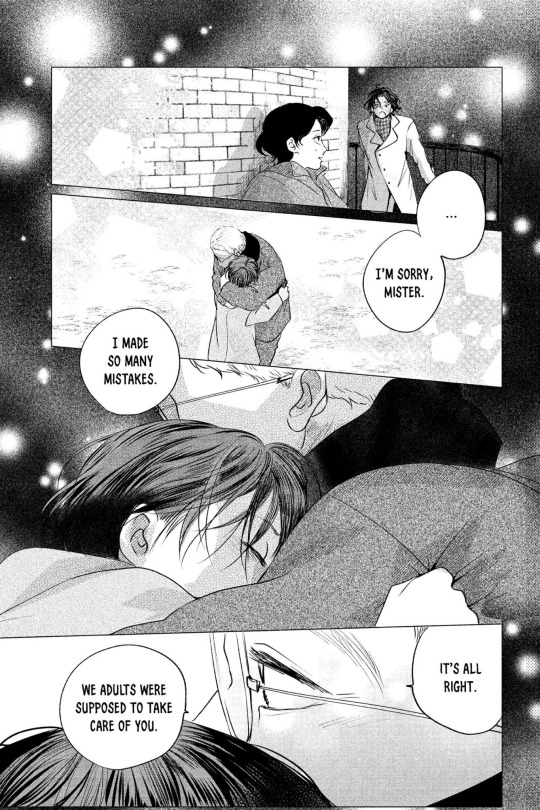


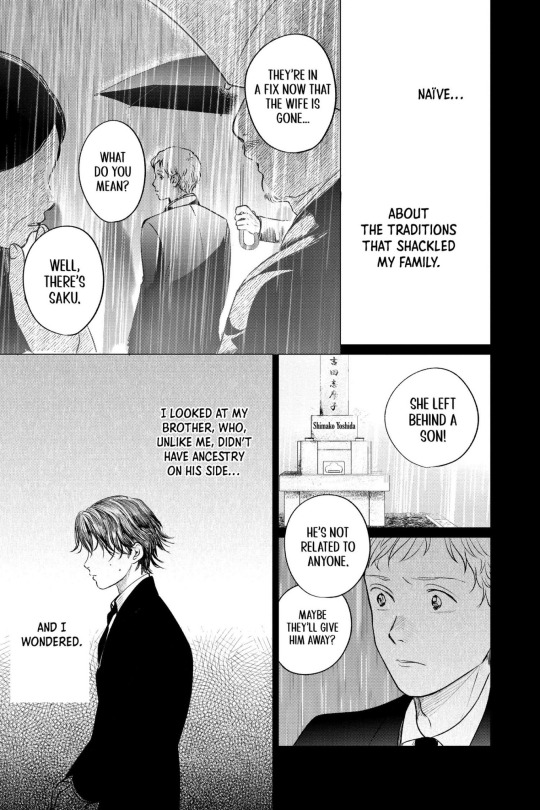
(the above is posted R to L)
I like how the areas that are usually negative space gets used for extended backgrounds in some instances. I like the textures that are used, and sometimes how it gives an ephemeral (?) or a sorta dreamy sort of feeling
Edit: a few assorted pages to further get what i’m saying across

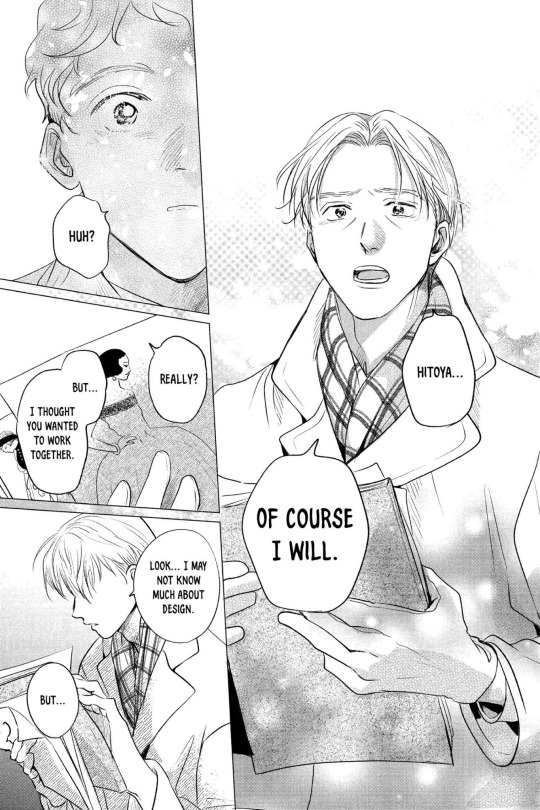

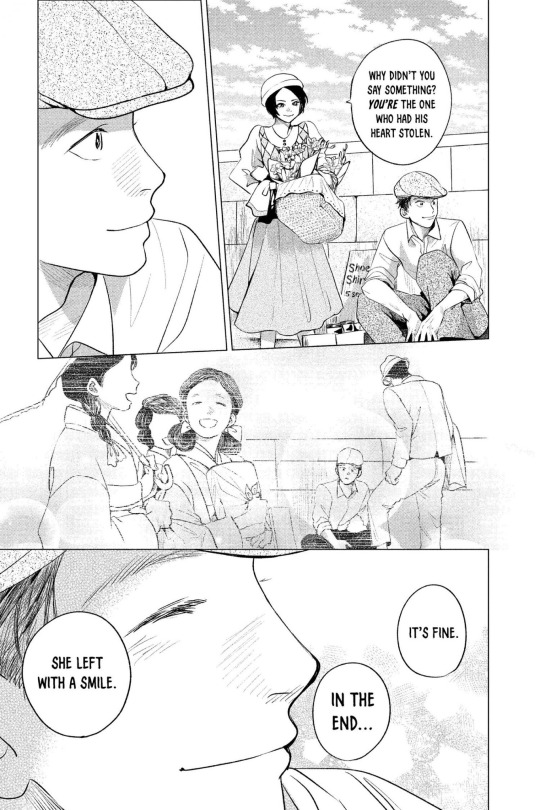
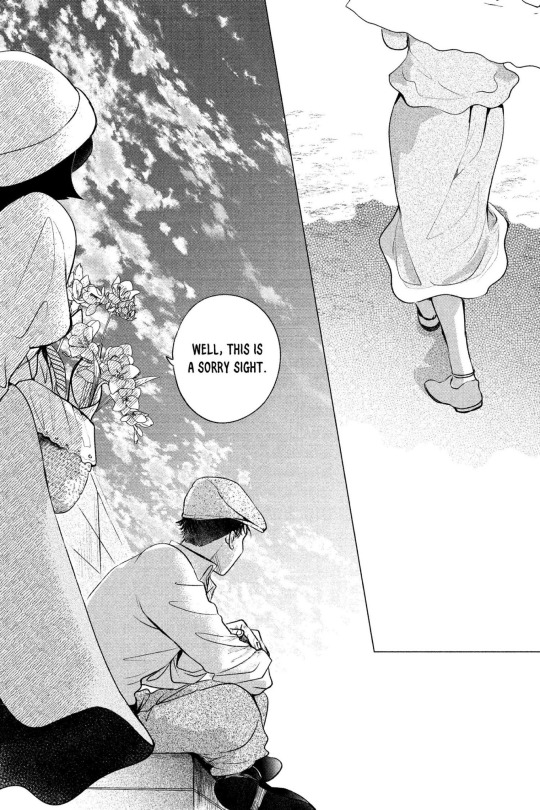
Also I found the word for it again (bc I’m sure I posted about something similar to this before). Atmosphere. It’s the atmosphere that is created using screentones or other textures that I really like
#desiree talks#desiree reads#manga#manga recommendation#i love manga that makes good use of screentones#some modern manga don’t use it very well#especially bc of digital mediums rather than traditional#i often see just plain greys (not even screentones to emulate ‘grey’)#or the screentones are just /there/#some older manga just seem to be ink but idk if its a stylistic decision#or bc they where scans of physical books and the screen tones were lost when adjusting lighting and contrast
0 notes
Text

warm and cool, shadow and light
probably 50ish layers on this one ö
gave up on trying to get the right colours down in the first go bc i am no genius, and just threw on all the layer modes and csp brushes! it was fun, though a small part of me nagged, "isn't it cheating to use all these tools and fast tricks to get the contrasts and colours and textures you want?" to which i turn (to this jester) and say, "ok, but what the fuck is 'cheating', you wont? skill in art is not a blanket number, the fields of art are so varied. also, sure, this probably means your exp points in digital art are way above those you've earned for traditional art but that's just how it is because you've become a laptop artist, and if you want to up those points you just have to take out your paint palette." to which i also say, "okay, but i don't really want to, partly because i'm lazy, i will eventually but i still want to keep it fun and loose and whatever and whenever i want, and anyhow all this lets me control values while fiddling around with effects, and it's quite quick anyway all this, all the principles of good representational art i'm trying to learn do go all out of wack while i'm struggling with mediums i'm less experienced with like gouache -- though i do want to get better at that too...: all to say it's comfortable, for now at least, let me be!" to which i lastly say, pinching my arm, "jesus van, you really are a bore," and to which i lastly lastly say, "rather a nerd than a junkie, right?!" to which i finally really do say, "both are lost obsessed losers!" and to which i ultimately say, "don't call myself a loser," and to that i really finally terminally theatrically say, "it's better to be honest-- laugh about it, loser!" and we laugh and laugh on the front porch.
part of this mood comes from the fact that i am halfway through aristotle and dante discover the secrets of the universe and i cannot stop crying and it gave me the hardest bout of raw sob i've had in a long time and i'm grateful. the pov for now is from a 15 year old boy who is repressed and kind and a wiseass and hates himself and i just feel so tenderly for all of this. to know that i really did hate myself as a teen too even if not for all of it, even if i didn't have a dante. to hear that voice and all that shame echoed back at me, even if it's not quite the same, is so satisfying in a nostalgic sort of way, such a familiar wretchedness. the sort that quiets the plain rattling off the checkbox list of healthy ways to love yourself and heal because you know you must love the you that hated yourself, and to do so, letting her hate herself in her youth, hate hate hate and hate especially the vanilla frosting optimism i've come to (begrudgingly) adopt... validation in the specifics, always, even after -- especially after you think you've learned it all and come to roll your eyes at the pastel instagram infographics giving you tips on how to love yourself. and to think i started reading this book because i saw a rec on r/suggestmeabook a while back and i shrugged and added it not thinking much; opening it sleepily on the mrt today, and then being a a whole, whole watery mess even on the bus all the way back, and -- well. here i've gone again, speaking so much and so out of turn. except there are no turns and my room is my echo chamber, but underneath and in my bookshelves digital or not there are passages of wind in and out. and here i am, reading, drawing, writing on occasion - the creative's dream sabbatical some would say, and of course it looks the part; but on the whole, i really am just flummoxed, and flimsy, and i am grateful for books like this that help me to see it. i can't wait to finish the book - i probably will, quickly, after this
how much of all this verbosity is just my loneliness? i can say it, can't i? i lived for a while with someone who liked to mock sincere feelings, probably because they didn't need to come close to theirs and could probably go on without ever needing the effort. and i felt so insecure around them because they would make fun of so many attempts artists took to reveal themselves and said their imperfections and drama were so cringey. i really don't like that word now, cringey. for now, i think i'm taking step backwards to come to the simple statement of who i am, who hasn't changed much since fifteen. was only swept about, put in some good places and some bad, got really lost and confused and insecure. but always, well, secretly-- dramatic. slow. sensitive. penchant for it... for that which i am always trying to salvage while running up against the day-to-day, i think... one day-- one day i will have better words.
grateful that i can spill alongside art on this private little tumblr -- everything so autobiographical and spilling over for me
6 notes
·
View notes
Photo

Artist spotlight: Mariya!
Instagram ✿ Twitter
Header source: [X]
Introduce yourself
Hi, I'm Mariya, I dabble in everything art & design! I work as a graphic designer but right now I'm going back to my roots and very into illustration. I love video games (sekiro, dark souls, Zelda, final fantasy) , doing new things, especially in NYC, and looking for purpose in life ._. !
When did you start drawing? Are you a digital or traditional artist?
I didn't have interest in art until 16
Which mediums are your favorites? Did you try going digital?
I use markers, watercolors, ink pen, and charcoal. I work digitally as well but haven't done it for a while
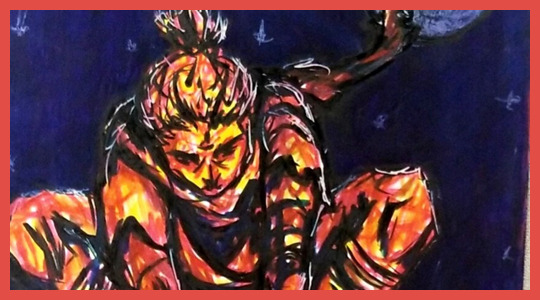
image source: [X]
Why do you prefer traditional over digital? (or viceversa)
There's a certain charm to have been created by hand that digital doesn't really replicate. I really want to get back into digital though, it's just I don't have an iPad or anything to draw on the go like I can with a paper pad.
What do you think is the most challenging part about being a traditional/digital artist?
Not having layers, lol. Harder to experiment but it's also nice to just throw yourself into the process even though you might screw it all up and not have an undo button.
What inspires your pieces?
A strong feeling might cause either an image to pop into my head or if not, I'll create dozens of compositions in my head, moving the elements around, until I capture that feeling or idea and can put it on paper.

image source: [X]
Explain your "everyday" drawing process
Right now, I try to not overthink it. I do a very rough sketch usually in pink pen, then place color down with markers, light to dark, blending and mixing. Then I use a black brush marker to do lines and dark areas. Finally, I add white details with a white gel pen if necessary. Nothing can be erased, only covered with a darker color, so it makes me approach each move with confidence and not waver.
Do you have an artist you admire (or more than one)?
Amano's loose and beautiful compositions and anatomy, toriyama's unique style and approach to character design, even though I kind of dislike many of his characters' designs personally, lol.
Is there an artwork you are most proud of? Why?
https://www.artstation.com/artwork/oOzN4B
I really like this right now bc I did it quickly on a short plane flight in as tiny sketchbook, after surgery, instead of fully focused at a desk or something, but it captured everything I wanted to capture. I work best with an element of chaos and this reinforces that, I think.
Do you listen to music (or tv shows/films/anything else) when drawing?
Yes, usually either video game instrumentals (like https://m.youtube.com/watch?v=8Zzoh8lgsOg&t=1700s) or a playlist of The Weeknd and Lana Del Ray

image source: [X]
What makes art interesting for you?
Creating something that no one but me can make, an idea and execution that has never been done before. It's something that I think only creatives really are able to do. It brings me purpose and makes me feel less insignificant.
What do you do when art block strikes?
I just don't make art, unfortunately. If it's mandatory to start right then, I go out for an iced coffee, on the walk there i endlessly brainstorm various paths I could take my piece until I find one that flows into a good idea.
What’s the most valuable art advice you’ve ever received?
During my first class in college from my 2d-design professor: you create better and more creative art when working within boundaries placed on your art, rather than full freedom. Embrace being bound.
2 notes
·
View notes
Photo




Robin J. Klang
Butterfly Core 893, 2015, Hand Jacquard Woven Cotton
Core Memory, 2012, 30" x 31", hand Jacquard woven silk and cotton
Butterfly Core 321, 2015, Hand Jacquard Woven Cotton and Chenille
Phantasmic Data Dawn, 2016, hand Jacquard woven cotton, synthetic yarns, hand dyed wool, plastic, metal rod, 56 inches x 98 inches
Your Norwegian-designed digital loom, Thread Controller 2 (TC2) is the only digital loom in New York City. What is special about TC2 and how does it work?
To my knowledge, it’s the only one in the New York City—there may be others. To best describe how it works, I feel the need to first explain how the Jacquard loom differs from floor-loom style weaving. With the floor loom, warp threads are strung through heddles—they kind of look like eyes of a needle—and are tied in sections to foot pedals. You have to push those pedals in a certain order to make the threads lift and create your patterns.
With the Jacquard loom, the innovation involved replacing the foot pedal system by using punch cards, which had the capability of lifting the threads in more complex ways. It provided a faster way to make very complicated textiles. This was even before electricity—now most Jacquard looms are electric and automated. For instance, my loom runs on a vacuum pump.
Vibeke Vestby, the Norwegian woman who invented the TC2, looked to create a version of the contemporary Jacquard loom that embraced its digital capabilities but was still hand-operated, rather than automated. This allows artists and designers the freedom of speed and technologic innovation, combined with experimentation that comes about with weaving by hand. You have lot of room for material investigation because you can switch out colors and do things that would be not be very costly for—or could potentially damage—an industrial machine designed for speed and quantity. Vibeke wanted to blend the two and create a version of the Jacquard loom that was hand operated—that’s what this machine is.
Files are designed on the computer, and then there’s a little bit of programming that happens where you have to translate the image into weave structures. Afterwards, you are ready to turn on the machine and begin weaving, which involves inserting the horizontal weft yarns by hand, while the digital loom lifts the warp threads per each line of pixels in your file. The TC2 is not necessarily designed for huge mass production—it’s meant for handmade projects, but it’s still fast, much faster than what could happen on the floor-loom.
I'm interested in the capability of pushing those moments where the pattern is broken through a color change or inserting unusual material such as plastics. It’s the idea of mixing an element of the hand-made glitch into our understanding of technology. In the textile customs of many indigenous cultures, there’s a practice of creating an intentional error within the piece—it's seen as an act of honoring the divine or indicating your imperfection. In Navajo culture it’s called the “spirit line”—a misplaced thread that looks like it’s breaking the symmetry but is actually intentionally situated there. I like to embrace this in my work as well—I find that it can take on an additional meaning in the context of the man versus machine conversation.
How do you decide what imagery to use for your textile pieces? What do you see as the relationship between computer chips and weaving, or modern technology and the loom?
Currently, there are two crossovers in the history of weaving and technology that have become inspirations to my imagery. The first is involves the history of the Jacquard loom. When the loom was invented, it was the first time punch cards were ever used in a mechanized process. The idea of punch cards as binary information carriers—where the cards are either punched or not, zero or one—was later used by another inventor named Charles Babbage, who appropriated this punch card concept for what is now considered the first computer. With this in mind, I've heard some people refer to the Jacquard loom as the grandmother to the computer. I think this is an especially beautiful reference because in Navajo culture, it was the grandmother spider who wove the universe in her womb and who taught humans how to weave.
The second crossover point involves the history of computer. During the first 20 years of computer history, the way the memory was stored involved woven copper wires and little magnetized beads. Those beads would be charged either positive or negative, again creating binary information but through magnetic memory. I find it fascinating that the early computer stored information through these little tiny weavings. Records indicate that it was mostly women who wove these because of the dexterity of their fingers, so there’s this amazing relationship between technology and the history of weaving.
Much of my imagery evokes these magnetic memory cores—I just love the idea how textiles have a rich relationship with memory. Textiles have often been made to commemorate important milestones in life, such as a baby blanket, a wedding day dowry gift, or a protection shirt that’s created for a son who is going off to war. There’s memory, intention, and cultural identity wrapped up into this cloth that took someone an intensive amount of labor to create. It’s an interesting reference point for thinking about information and memory in the context of our digital culture. Some of them are more literal references to technology, and others reference symbols from a global textile history. Whether it’s ancient zoomorphic characters, iconic symbolism, motherboard hardware, or digital marks generated with photoshop spray brushes, it’s kind of all blended together, like a soup.
Through intention and references to history, many of the works present themselves in an almost totemic, quasi-spiritual way. Perhaps it’s a kind of investigation into ghosts in the machine and our collective consciousness, and a rapid technologically connected globalized world becoming reference points for when science, spirituality, and imagination meet. Much has been written and theorized concerning technology and mysticism, and I often enjoy listening to books and lectures while I weave. It all gets imbued into the work.
What kinds of limitations do you find using a loom that you wouldn’t face if you working a different medium?
I think the main difficulty is the considerable amount of prep and behind-the-scenes work that happens. Actually weaving the piece, the fun part, goes relatively fast. For instance, I had to thread all those threads in the loom first—there’s 3,520 of them, and they all had to go through their own heddles in a particular order! There’s also the process of winding the warp, which can take months. There’s lot of labor that goes into prepping the loom so that you can weave on it. It’s a challenge. I think when people hear about the digital loom there’s an misconception that it’s more similar to 3D printing, where I can push a button and the thing is created.
Despite the challenges, I enjoy working with process-based media and I find there are little moments along the way that keep things exciting and provide constant opportunities to push what I can do with the machine. There’s still a lot to experiment with.
Textiles have a long and revered history as religious, illustrative, and decorative handmade objects dating back to 10,000 BC. Though in the 18th century, textiles were considered craft and often undermined as “women’s work.” Artists like Anni Albers, associated with the Bauhaus school of the 1920s, elevated textiles to the realm of fine art with modern, geometric abstractions. What role do you think textiles play in contemporary fine art now?
I think textiles have been more present within art history than people realize. There have been many waves of contemporary fiber and textile art since the Bauhaus. In the ‘60s and ‘70s these techniques were definitely very hot, and I think it’s interesting to note how that was also the moment when new media art was beginning as well. As with any movements that happen within the art world, there’s an adjustment period, and then it comes back around.
Now seems to be another moment where notions of craft, decoration, pattern, and high and low taste are being reconsidered within contemporary art. I’m interested in presenting a perspective from an artist who is living through this digital transformation and questioning what that means in the world of textile art. Our virtual lives are consuming a great deal of our being—perhaps at the same time there’s a need more than ever for the tangible and tactile, a desire for something that’s a slower, more physical process, and a place where textiles can fill a niche.
How do you see yourself and your work in relation to the tradition of textile art, a historically women-dominated field?
While there’s a Western connotation of textiles always being made by women, that’s not actually the case in many countries. For instance, in Turkey, men create much of the textiles.
Fiber by nature is a very inclusive media, existing in a somewhat "other" space, not being specifically painting or sculpture. That platform of inclusivity, as well as a carried notion of femininity, creates space for conversations about gender, politics, and identity. Regardless of what gender background you associate with, approaching the concept of femininity in contemporary art as a conscious tool for what you are talking about can be really interesting and powerful, especially in a time such as now when we’re seeing another wave of gender equality movements. Textiles have a central place in that conversation.
In contradiction to the feminine, I think there’s a largely masculine element to the technological aspects in my work—in the same way as textiles may be associated with women in western ideology, the connotation of the computer world is that it’s predominantly male. This blending of the two is interesting to me. However, the questions I’m most concerned with asking in my work have to do with process, history, memory, and the ghosts in the machine, though the associations with the materials will naturally be present.
3 notes
·
View notes